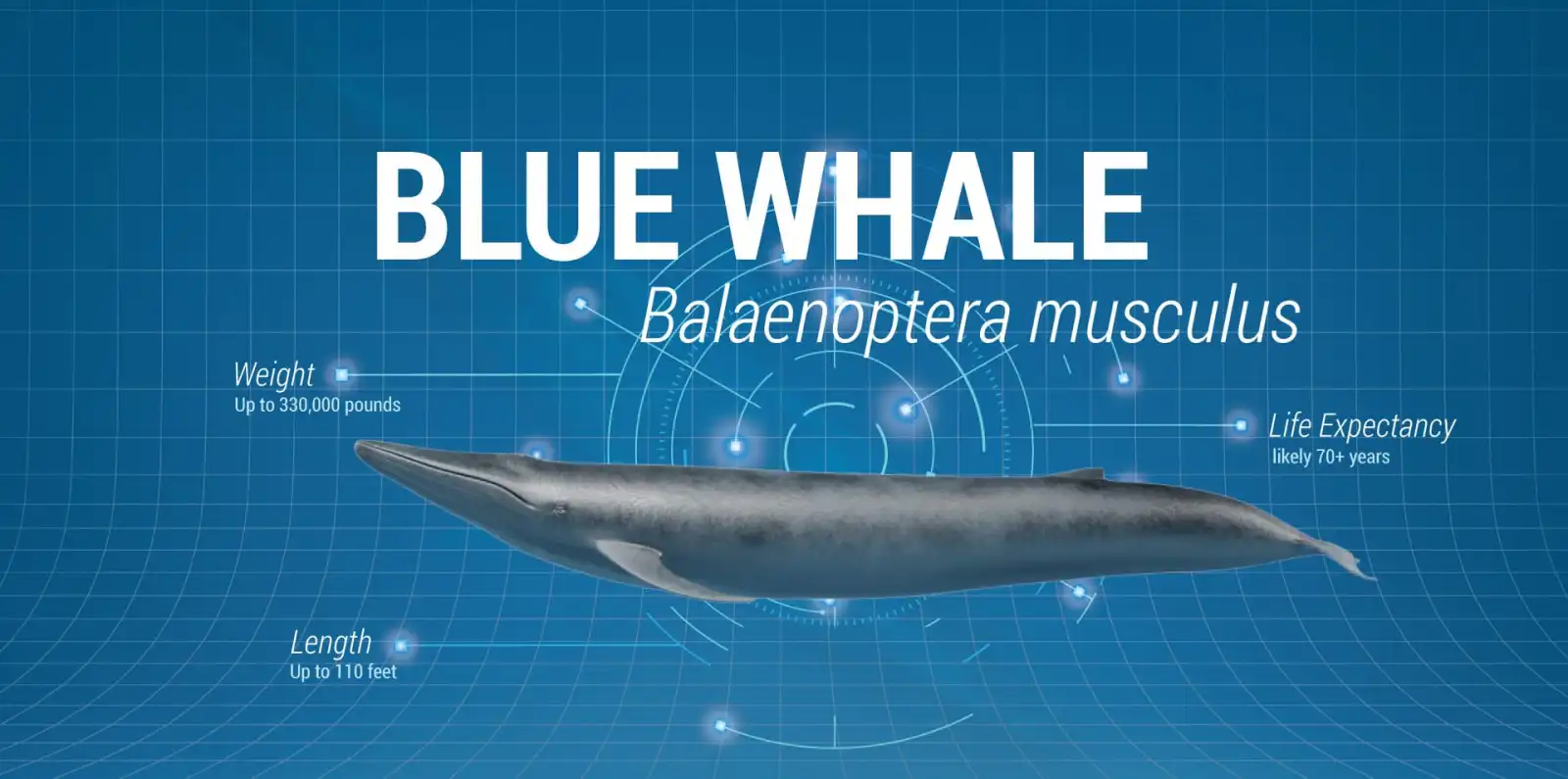BLUE WHALE


Blue whales are the largest animals ever to live on our planet. They feed almost exclusively on krill, straining huge volumes of ocean water through their baleen plates (which are like the teeth of a comb). Some of the biggest individuals may eat up to 6 tons of krill in 1 day. Blue whales are found in all oceans except the Arctic Ocean. There are five currently recognized subspecies of blue whales. They sometimes swim in small groups but usually alone or in pairs. They generally spend summers feeding in polar waters and undertake lengthy migrations towards the Equator as winter arrives.
PREY
The primary and preferred diet of blue whales is krill—tiny shrimp-like animals. Fish and copepods (tiny crustaceans) may occasionally be part of the blue whale’s diet. When these marine mammals hunt for food, they filter feed by swimming toward large schools of krill with their mouth open, then push the water out of their mouth with their tongue while keeping the krill trapped inside their baleen bristles.
PREDATORS
Groups of Orca / Killer Whales and humans.
THREATS
Inadvertent vessel strikes can injure or kill blue whales. Vessel strikes have killed blue whales throughout their range, but the risk is much higher in some coastal areas with heavy ship traffic. Blue whales can become entangled in fishing gear, either swimming off with the gear attached or becoming anchored. Blue whales can become entangled in many different gear types, including traps, pots, or gillnets. Once entangled, whales may drag and swim with attached gear for long distances, ultimately resulting in fatigue, compromised feeding ability, or severe injury, which may lead to reduced reproductive success and death. Additional threats include ocean noise, habitat degradation, pollution, vessel disturbance, and long-term changes in climate.
(Information from NOAA Fisheries. fisheries.noaa.gov)
